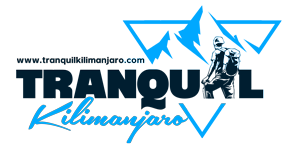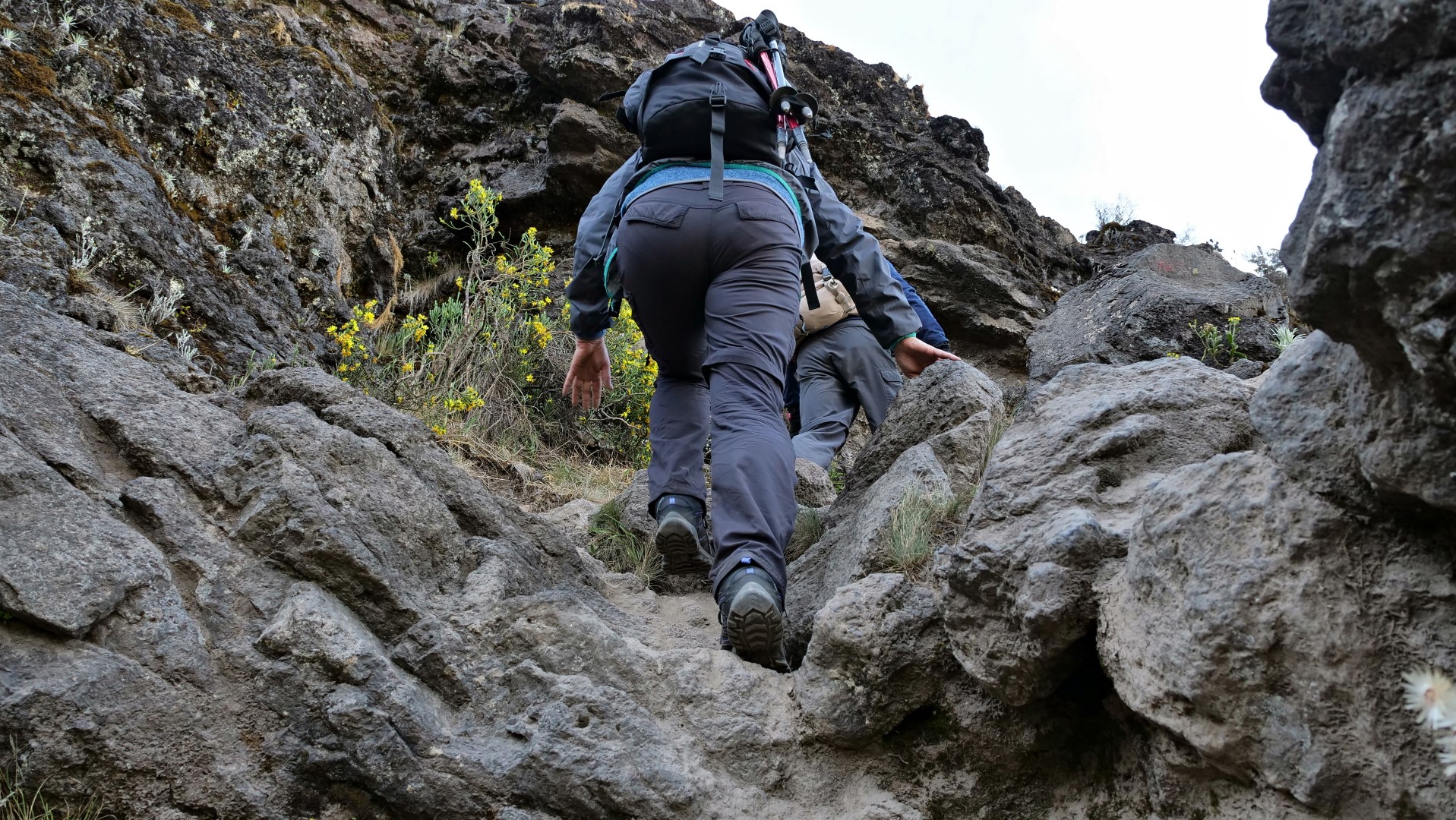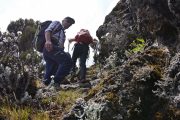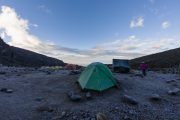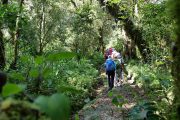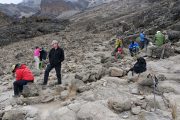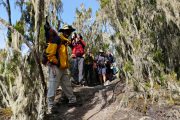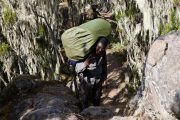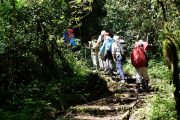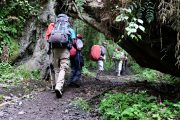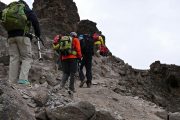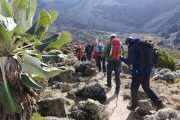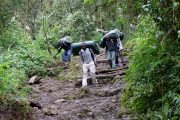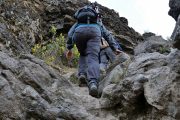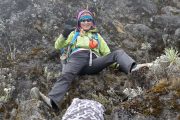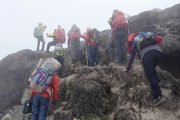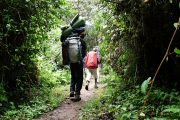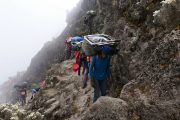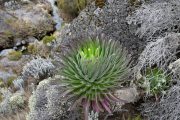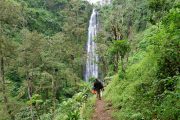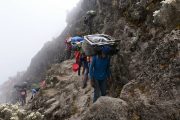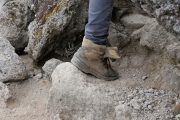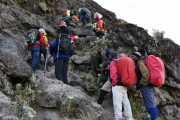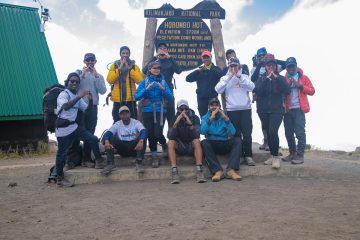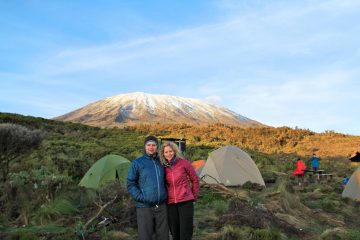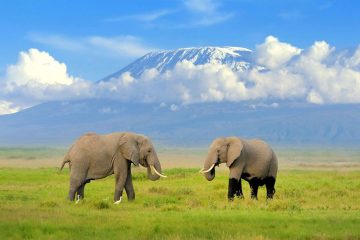Below are the most frequently asked questions about the Umbwe Route on Mount Kilimanjaro.
It’s simple to get to the start of the Umbwe trail. Starting from the south side of Mount Kilimanjaro, the trip is straightforward but not without its challenges. The Umbwe trail, also known as the mountain’s most difficult track, comprises a difficult vertical climb through the rainforest and, in some parts, tree roots that operate as a natural ladder.
The landscape is the greatest reward, aside from the physically demanding trek. Along each stage of the voyage, your eyes will be treated to breathtaking sights. The Umbwe route begins in the southern section of Kilimanjaro, presenting trekkers with a difficult ascent, and traverses beneath the Southern Ice Field before summiting from Barafu.
The trail of Umbwe Route does not go through the famous Crater Camp
Is the Umbwe route difficult?
The trail is shorter and more direct than the others, although it is not recommended for beginning climbers. It’s not a difficult climb, but it’s a physically and psychologically demanding trek. Previous trekking experience is strongly advised, since the days will consist of 6-8 hours of hiking with daily ascents of 900m to 1,000m, with the occasional day going to 1,100m to 1,200m. You may be walking at a height of above 3,500m depending on the route. You must have entire faith in your abilities to journey through challenging terrain for several days.
Some climbs may need the use of ice axes and crampons due to altitude and weather extremes. The hike will require physical and mental stamina to finish since the days will be long.
• Difficulty level: Extremely difficult
• Elevation: The Umbwe trail ascends to the summit, reaching 5,895 meters and the Uhuru peak (19,341 feet)
• Duration: The Umbwe route may be done in five days, although this is not recommended due to the lack of acclimatization days and low success rates. The majority of itineraries go for 6 or 7 days to allow for acclimatization.
• Terrain conditions: The trail is steep, and you’ll be trudging through rocky outcrops and, in some parts, clinging to tree branches as you drag yourself up the slope. You will experience severe winds and be exposed to the elements as you go to the high alpine zone.
What is the Umbwe route’s success rate?
The Umbwe route, regarded as Kilimanjaro’s most challenging, should only be attempted by experienced climbers. The path has a 60-70 percent success rate, with better odds of reaching the summit if you allow extra time for acclimatization.
What should I do to be ready for the Umbwe route?
Any physical exercise you can undertake before to your climb will make it more fun. The intensity of your training will vary depending on whether you’re going for the Uhuru Peak or a shorter trek, and it will be different for everyone.
When is the best time to climb the Umbwe route?
The Umbwe trail is accessible all year, but it may be wet and chilly, necessitating the use of appropriate waterproof clothing. Climbing seasons are January–March, and June–October. The rainiest months are April, May, and November.
What should I bring and what will I need?
While some trekking trip companies may provide part of the equipment, there are a few items that are non-negotiable, such as waterproof gear, a flashlight, sunglasses, adequate hiking boots, personal medication, a non-disposable water bottle, and a cap or beanie.
What are the directions to the Umbwe Route?
Before embarking on your hike to the summit of Mount Kilimanjaro, you’ll need to figure out how to get there and which kind of transportation is appropriate for your itinerary or trip. Travelers arriving from the United Kingdom, the United States, Australia, or Canada, as well as other regions of the world, have a few alternatives to choose from.
What climbing skills are required for the Umbwe route?
Mount Kilimanjaro welcomes hikers of all fitness levels and abilities, but reaching the summit requires careful preparation and rigorous training. To minimize altitude sickness and to enjoy your experience climbing Kilimanjaro, consider adding extra time to your plan.
What permits do I require?
Each visitor will be charged a conservation fee per person, per day to assist in the management of the national park; however, most excursions will cover the permits and entry costs.
Related
